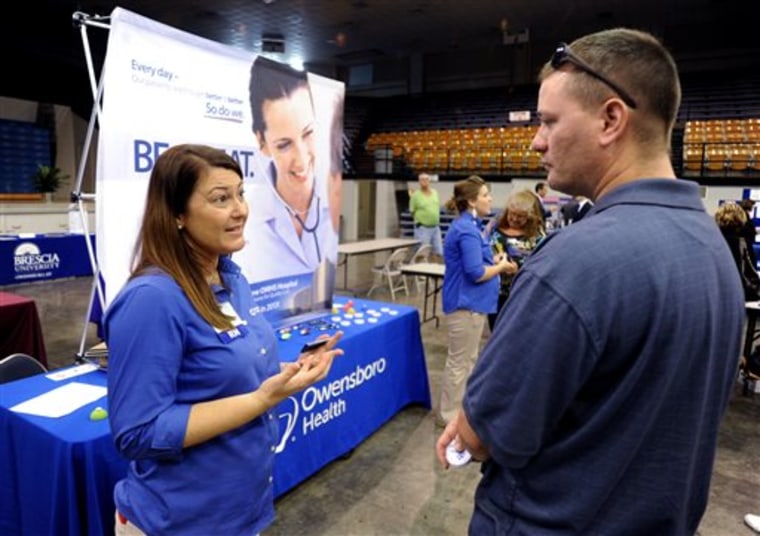Tuesday's jobs report should show that the employment picture improved slightly in September after a soft summer, but it will take several more months before market watchers and policy makers trust the numbers to tell a clear story.
September's report, delayed by the 16-day government shutdown, is expected to show 180,000 jobs were created and the unemployment rate unchanged at 7.3 percent, according to Reuters. There were 169,000 jobs added in August, but just 104,000 in July, after revisions.
The report, originally set for Oct. 4, had been anticipated as the most important piece of data the Fed would review before it meets next week, but it has become far less relevant because it is now stale and does not reflect the impact of the partial government shutdown. The closure also delayed the release of other data, including October's employment report, now expected Nov. 8 instead of Nov. 1.
The economic impact of the shutdown is yet to be seen, but it has made the view of the economy murkier because of the lack of all types of government data. The shutdown was resolved last week when Congress voted to push deadlines for a spending resolution to January and the debt ceiling to February.
"We think this will be a strong report. We're looking for 200,000 payrolls and a 0.1 (percentage point) drop in the unemployment rate," said Dean Maki, chief U.S. economist at Barclays. "Pretty much everything we look at suggested stronger payroll growth in September, than in the prior few months."
Because of the shutdown and uncertainty, the market has shifted its view for when the Fed might begin to "taper," or pare back, its $85 billion in monthly bond buying. While December is still an option, some Fed watchers do not expect the Fed to slow its purchases until Fed chair nominee Janet Yellen's first meeting in March, or even later.
"They're going to approach each of the economic reports — no matter what the reports are representing in terms of data — with a healthy dose of caution, and that is the right approach," said Tom Porcelli, chief U.S. economist at RBC Capital Markets. "Tapering is off the table for this year. It's becoming more of a 2014 event."
No data are more important to the Fed than the monthly nonfarm payrolls report, which will arrive 18 days late.
The Bureau of Labor Statistics' report features two counts: the establishment survey, which talks to employers and constitutes the aggregate job number count, and the household survey, which is a poll of individuals and is used to compute the unemployment rate, which stands at 7.3 percent.
— By CNBC's Patti Domm. Follow her on Twitter @pattidomm
— CNBC's Jeff Cox contributed to this report. Follow him on Twitter @JeffCoxCNBCcom
Related stories:
DC gets busy on to do list to avoid another crisis
